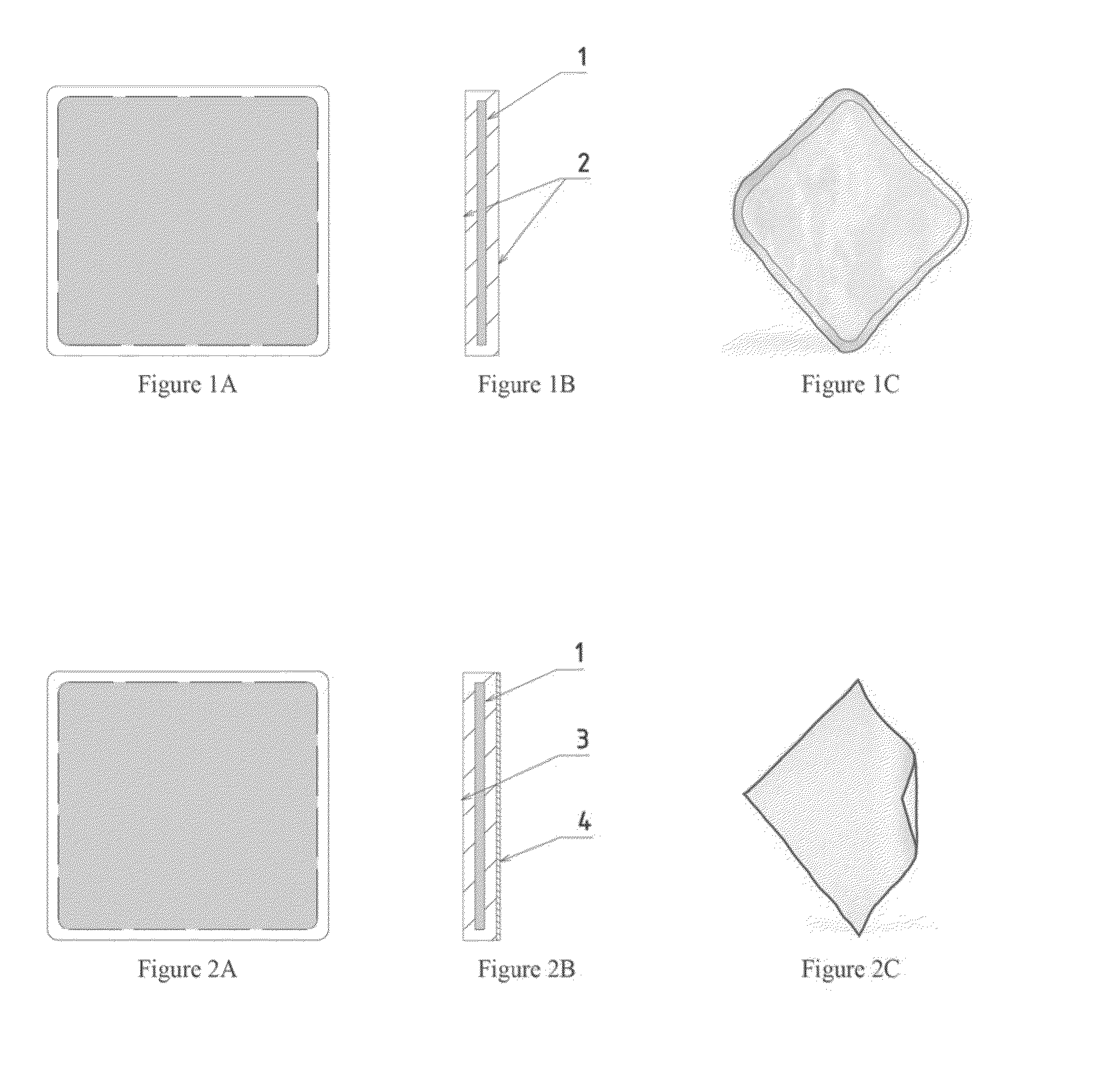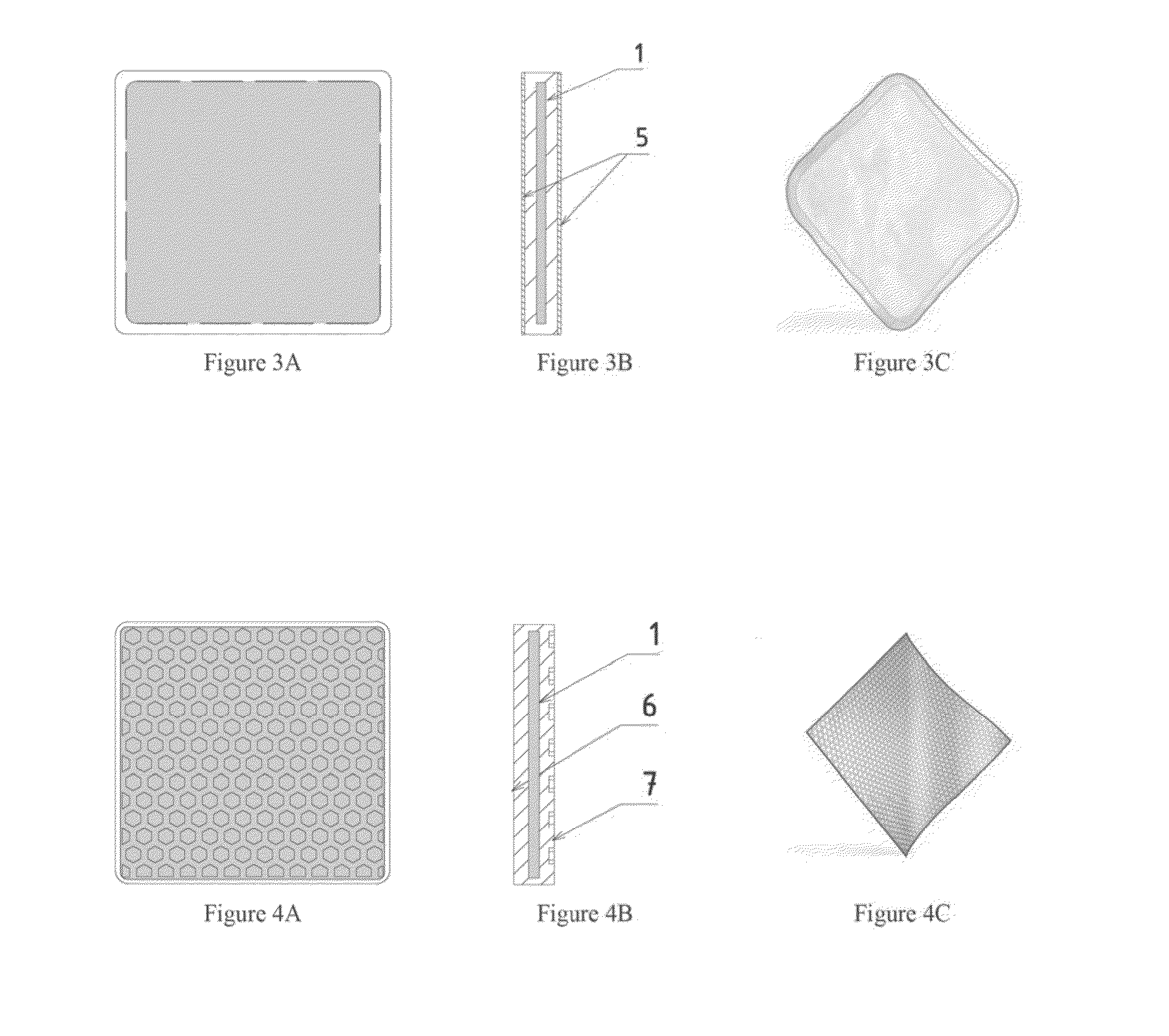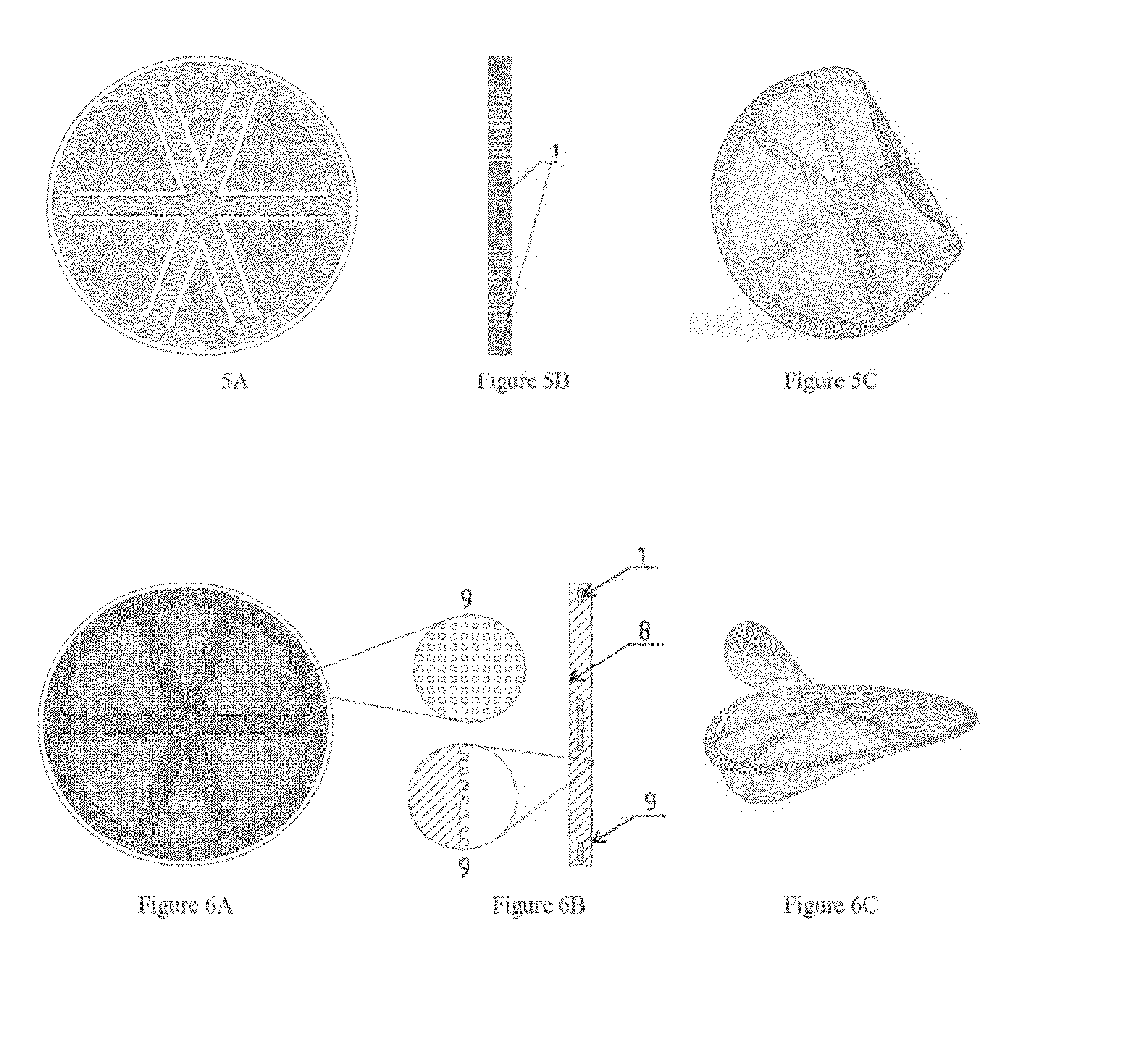Multipurpose implant with modeled surface structure for soft tissue reconstruction
- Summary
- Abstract
- Description
- Claims
- Application Information
AI Technical Summary
Benefits of technology
Problems solved by technology
Method used
Image
Examples
Embodiment Construction
[0041]While certain embodiments are described, these embodiments are presented by way of example only, and are riot intended to limit the scope of protection. Indeed, the novel methods and systems described herein may be embodied in a variety of other forms. Furthermore, various omissions, substitutions, and changes in the form of the methods and systems described herein may be made without departing from the scope of protection.
[0042]FIGS. 1A-1C illustrate an implant according to some embodiments. The implant of FIGS. 1A-1C is illustrated having a square shape, but it will be appreciated that this and other implants may have any desired shape. The illustrated implant has a profile section with a reinforcement element (1) covered with the film across the entire surface area of the element. The illustrated implant has both surfaces (2) that are smooth. The drawing in the FIG. 1A schematically illustrates the implant, while the drawing in FIG. 1C depicts a manufactured implant.
[0043]F...
PUM
| Property | Measurement | Unit |
|---|---|---|
| Surface roughness | aaaaa | aaaaa |
| Surface roughness | aaaaa | aaaaa |
| Size | aaaaa | aaaaa |
Abstract
Description
Claims
Application Information
 Login to View More
Login to View More - R&D
- Intellectual Property
- Life Sciences
- Materials
- Tech Scout
- Unparalleled Data Quality
- Higher Quality Content
- 60% Fewer Hallucinations
Browse by: Latest US Patents, China's latest patents, Technical Efficacy Thesaurus, Application Domain, Technology Topic, Popular Technical Reports.
© 2025 PatSnap. All rights reserved.Legal|Privacy policy|Modern Slavery Act Transparency Statement|Sitemap|About US| Contact US: help@patsnap.com



